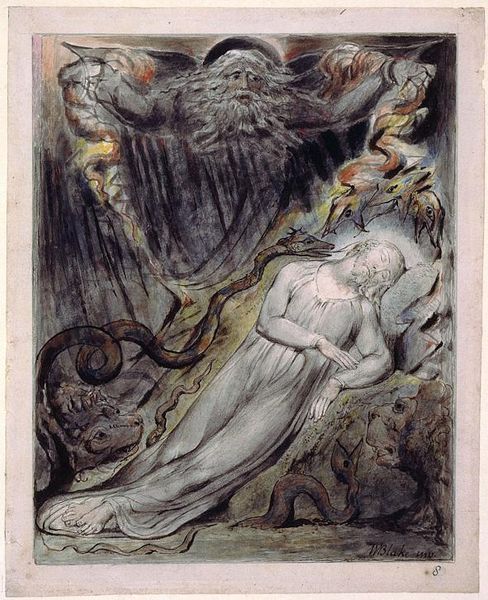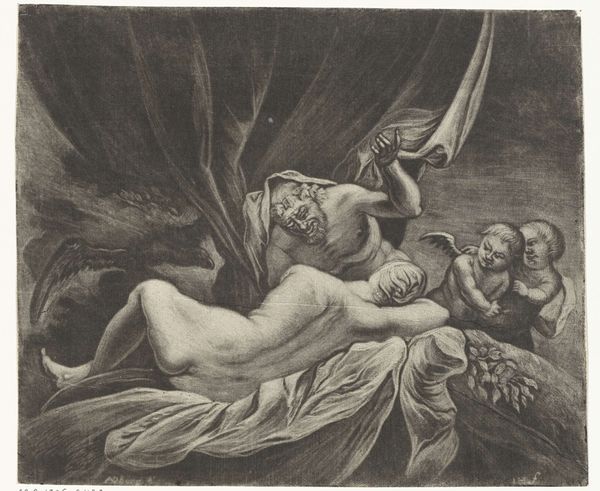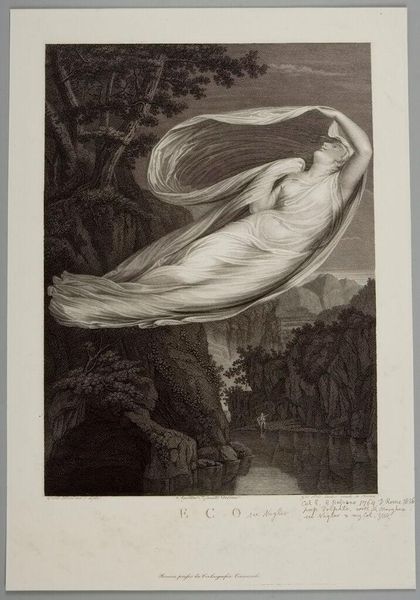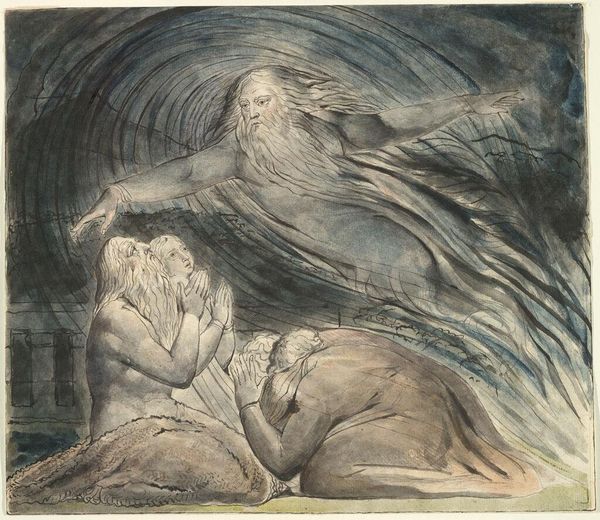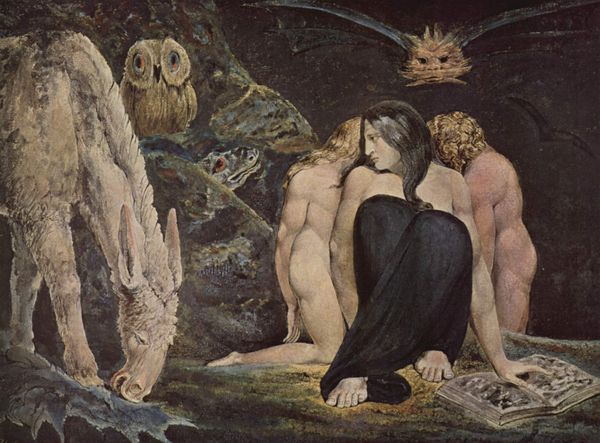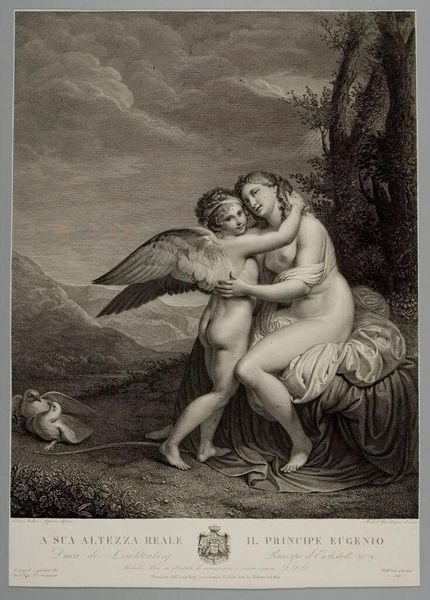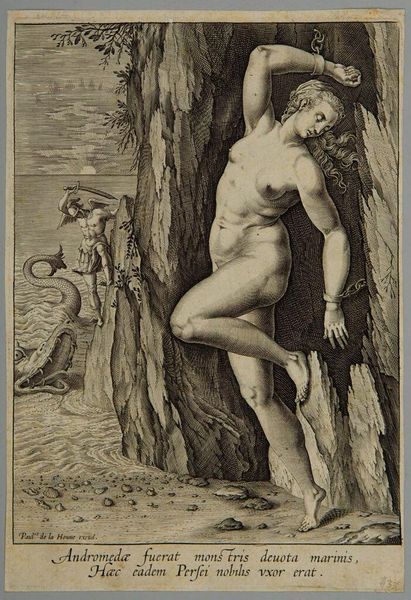
drawing, graphite, engraving
#
drawing
#
narrative-art
#
charcoal drawing
#
figuration
#
romanticism
#
surrealism
#
line
#
graphite
#
history-painting
#
charcoal
#
graphite
#
engraving
Copyright: Public domain
Editor: This is Gustave Doré's "The Inferno, Canto 5." The figures are rendered in graphite and charcoal, perhaps also engraving techniques were used, giving the image a surreal, dreamlike quality. It strikes me as quite dramatic, the way the figures are caught in this whirlwind of darkness. How do you interpret this work from a formalist perspective? Curator: It’s a compelling image to consider purely through its visual components. The stark contrast between light and shadow immediately commands attention, doesn't it? Note how Doré uses line—primarily through crosshatching—to sculpt form and create depth. It’s not just about representing figures, but about constructing an emotional space through these formal arrangements. Editor: The composition is striking. It seems that the lines emphasize movement and chaos. Curator: Precisely! The swirling lines contribute to a dynamic, almost dizzying effect. How do you feel that the lack of color informs our experience of the narrative depicted? Is it vital to its overall aesthetic? Editor: Good question! It focuses the attention on the shapes and textures. Perhaps, it's also mirroring the darkness of hell. Curator: Exactly. Notice how the strategic placement of highlights draws our eye to the entwined figures, making their embrace central to the composition. The rest recedes into a shadowy abyss. This focus through chiaroscuro helps underscore the tension in the scene. Do you see how the formal aspects enhance the subject, even divorced from its narrative context? Editor: Definitely! I see how each choice, even in a monochrome drawing, impacts the emotion and emphasizes specific themes, using light and dark as emotional guides. Thank you! Curator: Indeed. Thinking through the formal elements allows us to unpack the artist's intention, understanding how visual language creates the experience of art. Thank you for your insightful questions!
Comments
No comments
Be the first to comment and join the conversation on the ultimate creative platform.

